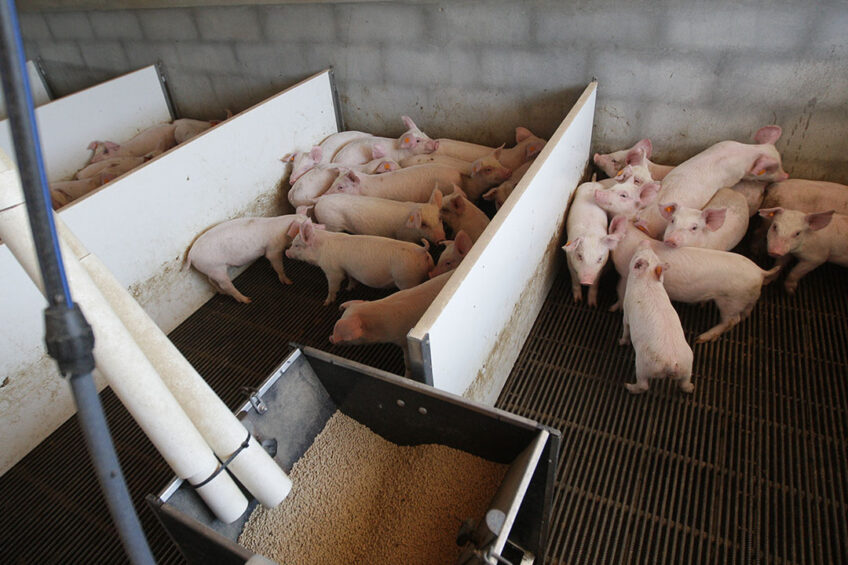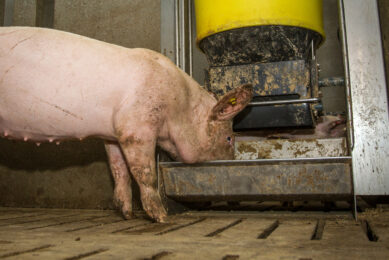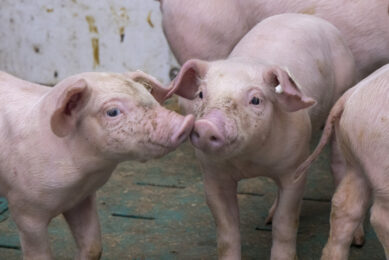Strategies to make pork production more sustainable

A focus on global sustainable intensification is necessary to protect the environment, preserve natural resources and support the livelihoods of farmers and rural populations. Strategies for a sustainable pork production such as improved feed efficiency, precision livestock farming and feeding, and monitoring of disease and welfare issues may help.
These areas were highlighted in a review by researchers from Australia, France, Norway, Spain, Sweden, the UK and the USA dating from 2020 in the Journal of the Science of Food and Agriculture.
Further rise of global population
The research is relevant as the number of people in the world may rise to 11 billion people by 2100, according to UN figures. This increases the global demand for pork production. Genetic selection improves production yield per animal and increases the world’s pig populations.
Swine farming provides a supply of energy, protein, and important micronutrients such as fatty acids, copper, iron, iodine, manganese, selenium, zinc, B-vitamins in the human food chain. It also contributes to global food security, employment, economy, carbon storage, and nitrogen emission. In spite of the multiple benefits of pork production, the increase in the pig population affects sustainability and the environment, according to the authors.
Producing 4 oz (0.113 kg) of lean, boneless pork in the US requires 0.906 m2 (9.75 ft2) of land
Sustainable pork production challenges
The ever growing demand for pork products has led to intensive swine farming and more land dedicated to grow and feed pigs. According to the USDA, producing 4 oz (0.113 kg) of lean, boneless pork in the US requires 0.906 m2 (9.75 ft2) of land. The total amount of land used by the US pork industry for all pork consumed is 6,070,000 ha (15,000,000 acres) x years.
The livestock sector accounts for 8% of global water use mainly for feed crops irrigation, and the water needed to produce pork ranges from 4,900 to 6,000 liters per kg on open rangeland. However, improving feed efficiency in pigs and larger yields of feed crops improve the ratio of the product output per animal to its water footprint.
Fossil energy for swine production
On the other hand, the kcal fossil energy input required for swine production per kcal of animal protein produced is 14 to 1, according to the research team. In pig supply chains, the bulk of greenhouse gas emissions are related to the feed supply and manure storage in processing. Globally, the pig supply chain accounts for 16% of the total nitrogen emissions from livestock. In addition, pigs have the lowest methane emission factor among livestock, and they produce 1.5 kg methane per head per year. Furthermore, swine production is responsible for 18 million metric tonnes of carbon dioxide contributing to global warming, and acidification and eutrophication of ecosystems, the team wrote.
High stocking density, a high degree of mechanisation, low labour requirement, and efficient feed conversion ration are key factors to improve sustainability
Synergy in many agricultural factors
There is a need for a synergistic combination of increased crop yield, improved feed efficiency, technologies and management, precision livestock farming, and precision livestock feeding to improve the sustainability of pork production systems. It is recommended to increase actual crop yield using genetic selection, and proper technologies and management. In addition, improved crop production requires irrigation, fertiliser, machinery, crop protection products for pest and weed control, and soil-conservation measures.
High stocking density, a high degree of mechanisation, low labour requirement, and efficient feed conversion ration are other key factors to improve sustainability, the authors wrote. Selection for feed efficiency is particularly relevant to support increased production levels with fewer resources, reducing the energy necessary for producing feed while reducing animal excretions. Sustainability can improve by applying technologies for automatic real-time monitoring and control of production/reproduction, animal health and welfare, and the environmental impact of livestock production.
Feed comprising 60-70% of production costs
Feed comprises 60-70% of the overall production costs; therefore, precision livestock feeding which provides in real-time the individual amount of nutrients required that maximises nutrient utilisation without loss of performance is essential to consider. Furthermore, the scientists added, monitoring feeding, drinking, elimination, and social behaviours and locomotion and posture provides a quick evaluation of production, increases profits, and improves the acceptability, sustainability, and resilience of pork production systems.











